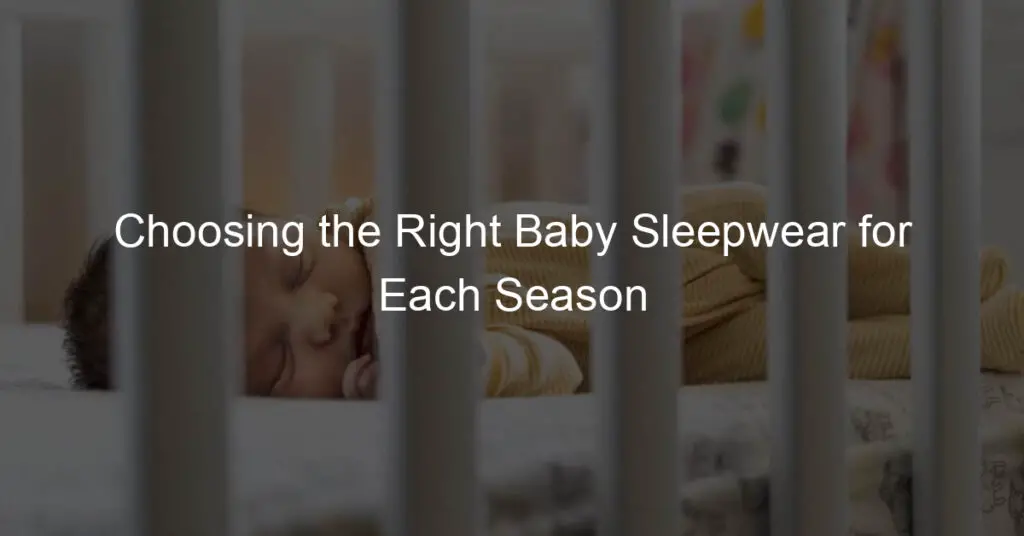Introduction to Baby Sleep Safety
As parents, we all want the best for our little ones. One of the most critical aspects of their early life is sleep. Not only does it contribute to their growth and development, but it also ensures they are healthy and happy. However, baby sleep safety is a topic that often raises many questions and concerns. In this section, we will delve into the importance of safe sleeping for babies and address some common concerns about infant sleep safety.
-
- Importance of safe sleeping for babies
Safe sleep is vital for babies. According to the American Academy of Pediatrics, safe sleep can help reduce the risk of Sudden Infant Death Syndrome (SIDS), suffocation, and other sleep-related infant deaths. It’s not just about the quantity of sleep, but the quality and safety of sleep that matters. A safe sleep environment can also contribute to better sleep quality, leading to improved cognitive development and overall health in babies.
-
- Common concerns about infant sleep safety
Many parents often worry about their baby’s sleep safety. Some common concerns include the right sleep position, the use of blankets and pillows, the ideal room temperature, and whether to co-sleep or not. While these concerns are valid, it’s important to remember that every baby is unique and what works for one may not work for another. Therefore, it’s crucial to understand the basics of baby sleep safety and consult with a pediatrician or a sleep expert to address any specific concerns.
In the following sections, we will delve deeper into understanding the basics of baby sleep, safe baby sleep practices, and guidelines to ensure your baby gets the restful and safe sleep they need.
Understanding the Basics of Baby Sleep
Understanding your baby’s sleep is crucial for their health and development. It can also help you as a parent to establish a routine and ensure your baby is getting the rest they need. Let’s delve into the basics of baby sleep, focusing on newborn sleeping safety.
Newborn Sleeping Safety
When it comes to newborns, sleep safety is paramount. It’s essential to understand how newborns sleep and their common sleep patterns to ensure they are sleeping safely and soundly.
-
- How Newborns Sleep
Newborns sleep a lot, typically around 16 to 17 hours a day. However, their sleep isn’t continuous. They wake up frequently due to their small stomachs needing frequent feedings. Newborns have a sleep cycle that’s far shorter than adults’, which is why they wake up often. Infant sleep training can help regulate their sleep patterns over time.
-
- Common Newborn Sleep Patterns
Newborns don’t have a set sleep schedule. They sleep and wake up throughout the day and night. Their sleep patterns are divided into two stages: REM (Rapid Eye Movement) sleep and non-REM sleep. Newborns spend about half of their sleep time in each stage. As they grow, they start sleeping more at night and less during the day, gradually developing a more adult-like sleep pattern.
Understanding your newborn’s sleep patterns can help you create a safe and comfortable sleep environment. Remember, every baby is unique, and their sleep patterns will change as they grow and develop.
Baby Sleep Precautions
Ensuring your baby’s safety during sleep is crucial. Here are some precautions to consider:
-
- Creating a safe sleep environment:
Creating a safe sleep environment for your baby is the first step towards ensuring their safety. The American Academy of Pediatrics recommends a firm sleep surface covered by a fitted sheet with no other bedding or soft objects to reduce the risk of SIDS and suffocation. The baby’s crib, bassinet, portable crib, or play yard should meet the safety standards of the Consumer Product Safety Commission. Wikipedia provides more information on SIDS and its prevention.
-
- Understanding the risks of co-sleeping:
While co-sleeping might seem like a convenient option for new parents, it comes with its own set of risks. Co-sleeping can increase the risk of SIDS, especially for babies younger than three months. It can also lead to accidental suffocation or strangulation if the baby gets trapped between the bed and the wall or if parents accidentally roll over onto the baby. It is recommended to keep the baby’s sleep area in the same room where you sleep but not in the same bed. This arrangement can reduce the baby’s risk of SIDS by as much as 50%.
Remember, every baby is unique and may have different sleep needs and patterns. Always consult with your pediatrician or a sleep specialist if you have any concerns about your baby’s sleep.
Safe Baby Sleep Practices
Ensuring your baby’s safety during sleep is of utmost importance. Here are some tips to help you create a safe sleep environment for your little one.
Baby Sleep Safety Tips
-
- Choosing the right crib and mattress
Choosing the right crib and mattress is the first step towards ensuring your baby’s safety during sleep. The crib should be sturdy and free from any loose or broken parts. The mattress should fit snugly within the crib, leaving no gaps. It should also be firm, as soft mattresses can pose a suffocation risk. According to the American Academy of Pediatrics, a bare crib with a tight-fitting, firm mattress and a fitted sheet is the safest sleeping environment for your baby.
-
- Positioning your baby for sleep
Always place your baby on their back to sleep. This position reduces the risk of Sudden Infant Death Syndrome (SIDS). Make sure there are no pillows, blankets, or stuffed animals in the crib as these can increase the risk of suffocation. The crib should be placed away from windows, heaters, lamps, wall decorations, and cords to prevent accidents.
Remember, every baby is unique and what works for one might not work for another. Always consult with a healthcare professional if you have any concerns about your baby’s sleep habits or safety.
Ensuring Baby Safety While Sleeping
Ensuring your baby’s safety during sleep is of utmost importance. This involves two key aspects: monitoring your baby’s sleep and understanding the signs of sleep-related issues. Let’s delve into these two areas:
- Monitoring your baby’s sleep
Monitoring your baby’s sleep is crucial in ensuring their safety. This involves regularly checking on them, especially during the night. You can use a baby monitor to help you keep an eye on your little one even when you’re not in the same room. This allows you to respond quickly if your baby needs you.
It’s important to note that each baby has a unique sleep pattern. Some may sleep for long stretches, while others may wake up frequently. Understanding your baby’s sleep pattern can help you anticipate their needs and respond appropriately.
- Understanding the signs of sleep-related issues
Recognizing the signs of sleep-related issues is another key aspect of ensuring baby safety. These issues can range from common ones like difficulty falling asleep or staying asleep, to more serious conditions like sleep apnea or sudden infant death syndrome (SIDS).
Common signs of sleep-related issues include excessive fussiness, difficulty breathing, or unusual sleep patterns. If you notice any of these signs, it’s important to seek medical advice immediately. Early detection and treatment can help ensure your baby’s safety and well-being.
Remember, your baby’s safety is paramount. By monitoring their sleep and understanding the signs of sleep-related issues, you can ensure they are safe and sound while they sleep.
Baby Safe Sleep Guidelines
Ensuring your baby’s safety while they sleep is a top priority for every parent. Here are some guidelines to help protect your baby during sleep.
How to Protect Baby During Sleep
There are several measures you can take to ensure your baby’s safety during sleep. Here are two key strategies:
-
- Using baby monitors effectively
Baby monitors are an essential tool for parents. They allow you to keep an eye on your baby without being in the same room. When choosing a monitor, consider features like video capability, sound sensitivity, and range. Once you have a monitor, place it in a spot where it can clearly capture the baby’s crib. Remember to check the monitor regularly and keep the volume at a level where you can hear it throughout your home.
-
- Importance of regular check-ins
Even with a baby monitor, it’s important to physically check on your baby regularly. This allows you to ensure they are breathing normally and haven’t rolled into an unsafe position. Try to balance this with allowing your baby to sleep undisturbed. A good rule of thumb is to check in every few hours, or if you notice any unusual noises or silence on the baby monitor.
By following these guidelines, you can help ensure your baby’s safety during sleep. Remember, every baby is unique, so what works best for one may not work for another. Always trust your instincts and consult with a healthcare professional if you have any concerns.
Adapting as Your Baby Grows
As your baby grows, their sleep needs and safety measures will change. It’s important to adapt to these changes to ensure a safe and comfortable sleeping environment for your child. Here are some key areas to focus on:
-
- Transitioning from crib to bed
When your child reaches the age of about 18 months to 3 years, it may be time to transition from a crib to a toddler bed. This is a big step and should be done gradually. Start by introducing the new bed during daytime naps. Make sure the bed is low to the ground and has safety rails to prevent falls. You can also make this transition easier by maintaining the same bedtime routine.
-
- Teaching your child about sleep safety
As your child grows, it’s important to teach them about sleep safety. This includes understanding the importance of a regular sleep schedule, the need for a safe sleeping environment, and the dangers of items like loose blankets and stuffed animals in the bed. Use simple, clear language and repeat the information often to help your child understand these important concepts.
Adapting to your baby’s growth is a continuous process. By staying informed and proactive, you can ensure your child’s sleep safety at every stage of their development.
Conclusion: Ensuring Restful and Safe Sleep for Your Baby
As we conclude this informative journey, it’s essential to recap the crucial aspects of baby sleep safety and share some final thoughts. The goal is to ensure that your baby enjoys restful, safe sleep, which is vital for their overall growth and development.
-
- Recap of Key Takeaways
Understanding the basics of baby sleep is the first step towards ensuring your baby’s safety. Babies have different sleep patterns compared to adults, and they need more sleep hours. Always remember the ABCs of safe sleep: Alone, on their Back, and in a Crib.
Adhering to safe baby sleep practices is crucial. This includes using a firm sleep surface, keeping the sleep area free from toys and loose bedding, and maintaining a smoke-free environment. Regular check-ups and vaccinations also play a significant role in your baby’s health and safety.
Following the baby safe sleep guidelines not only ensures your baby’s safety but also promotes restful sleep. These guidelines include maintaining a consistent sleep schedule, creating a sleep-friendly environment, and understanding the signs of sleep readiness.
-
- Final Thoughts on Baby Sleep Safety
Ensuring restful and safe sleep for your baby is a responsibility that every parent should embrace. It’s not just about following guidelines and practices; it’s about creating a nurturing environment that promotes your baby’s overall well-being. Remember, your baby’s safety and comfort should always be your top priority.
Lastly, always stay informed and updated on the latest research and guidelines related to baby sleep safety. Knowledge is power, and in this case, it’s the power to provide the best care for your little one.
Thank you for taking the time to read this article. We hope it has been informative and helpful. Remember, every baby is unique, and what works for one might not work for another. Always consult with a healthcare professional if you have any concerns or questions about your baby’s sleep.














